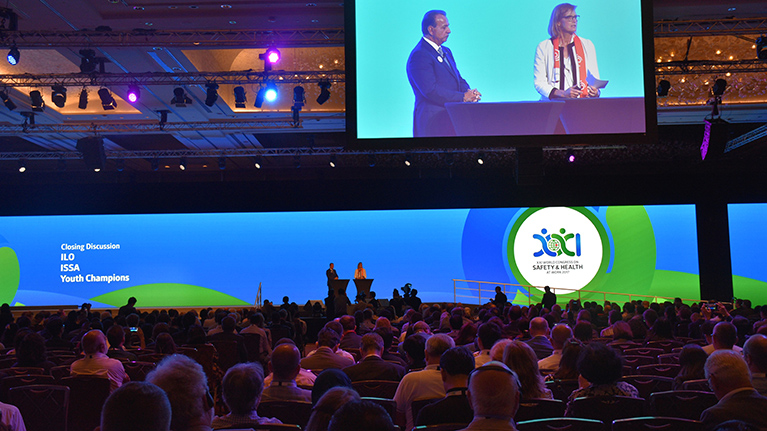

Share
New figures show increasing numbers of work-related fatalities and injuries, highlighting a global failure to address occupational safety and health concerns, according to the World Congress on Safety and Health at Work in Singapore.
More than 3,500 occupational safety and health practitioners, government, employer and worker representatives participated in the collaborative discussion at the triennial Congress. The meeting, co-organized by the International Labor Organization, concluded with calls from the ILO and partners for concerted global action to address new and emerging occupational safety and health challenges.
New figures released at the conference show that work-related fatal injuries and diseases have increased from 2.3 million to 2.78 million per year, highlighting the global cost of the failure to adequately address occupational safety and health concerns. The cost of these deaths and injuries is estimated at 3.94 percent of global GDP per year, or 2.99 trillion US dollars. Data also reveal that youth are 40 percent more likely to suffer work-related injury and illness than older workers.
In the face of these challenges, ILO Director-General Guy Ryder noted ILO’s interest to engage in the development of a global coalition with key partners to promote safer and healthier working conditions.
The work of Singapore, the host country, was also highlighted during the conference: “In little over a decade Singapore has developed the necessary OSH policies, systems and programmes and has led the world in innovative approaches to improving safety and health in SMEs,” said Labor Administration, Labor Inspection and Occupational Safety and Health Branch Chief, Nancy Leppink, in her opening keynote address.
“The World Congress on Safety and Health is the time and the place that the global Occupational Safety and Health community comes together not only to share knowledge, expertise and experiences but to identify partners and collaborators. In that respect, we fulfilled our objectives in this Congress,” said Leppink. “It is also where we see the expectations others have of ILO for setting norms and promoting fundamental rights at work.”
ILO interventions throughout the World Congress, held from Sept. 2-6, underlined existing and emerging OSH challenges affecting the future of work, including the globalization of workforce, the need for reliable data on injury and illness, and protecting labour rights for workers in precarious employment including migrants, women and youth.
ILO symposia and technical sessions at the World Congress set the stage for discussions on improving enforcement and compliance systems for labour inspectorates, and fostering and sustaining OSH knowledge exchange networks.
In response to the ongoing challenge of young worker vulnerability to injury and illness, the XXI World Congress in Singapore included for the first time ever, a parallel Youth Congress. The ILO SafeYouth@Work Project, in collaboration with the Singapore Ministry of Manpower, invited 125 Youth Champions from more than 29 countries to participate in the SafeYouth@Work Congress. The four-day congress was an opportunity for young workers and employers to learn about and make the case for safer and healthier working conditions for young people, and to propose youth-oriented approaches to achieve this objective.
“Young workers represent 25 percent of the workforce and are the most vulnerable to work-related exploitation because they tend to enter the most dangerous jobs. They can only choose between jobs without proper benefits, without proper pay, without proper resting time or having no job at all,” said one of the youth champions, Ronnie John Barrientos from the Philippines. Barrientos welcomed the SafeYouth@Work Congress as an opportunity to gain a better understanding of the mechanisms which can help reduce and eventually eliminate those situations.
As part of the youth congress, a high-level SafeYouth@Work Dialogue was held, where Youth Champions were able to directly engage with international OSH experts. The dialogue led by Leppink, included Josephine Teo, Second Minister of Manpower, Singapore, and Sustainable Development Goal (SDG) Global Leader and youth empowerment advocate, Samar Samir Mezghanni. Through the dialogue all actors present were asked to commit to an action plan for innovative ways to reduce the high incidence rate of injuries to young workers and lay the foundation for a culture of prevention on OSH. The SafeYouth@Work Action Plan provides a platform for engagement between Youth Champions and other key actors.

